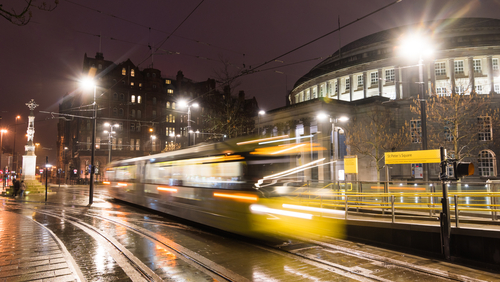
You may have thought that if a train or bus is delayed, it would be better to walk. The state of Greater Manchester, which owns the second city of England, Manchester, has begun to address these traffic concerns.
TfGM, the Greater Manchester Transportation Bureau, is the core of regional transportation that has built a 580km arterial road network by providing bus, train, and tram services that run through Greater Manchester. TfGM is working with cloud data warehouse operator Snowflake to make Manchester a smart city.
At first glance, an attempt to optimize city traffic based on databaseized passenger demand is not a novel idea. However, considering that 5.6 million movements per day are repeated every day in this area, we can see that we have to deal with a huge amount of data.
An official from TfGM said about the situation before starting the theoretical effort, saying that in the past, data was accessed in various ways such as spreadsheets and modeling tools, but the data was so vast that it took a lot of effort and time to obtain meaningful data.
However, by using the snowflake analysis platform, analysis that was not possible until now is possible. Specifically, it is possible to accurately and in real-time grasp which means of transportation and who is using them, and appropriately allocate personnel and vehicles. In this way, it is expected that the occurrence of full trains and commuter complaints will be greatly reduced.
Some of the results of these efforts are already being realized in visible form. In July 2019, TfGM introduced contactless payment to Manchester Metrolink, which is responsible for transportation in the heart of Manchester. Therefore, the fare is cheap and payment is quick and easy. In addition, user tracking became easier, enabling more advanced information collection, and this benefit enables accurate prediction of morning and evening rush hours. Accordingly, a new early morning discount was launched, with the aim of reducing rush hour users and alleviating peak hour congestion by discounting fares for those who are busy during rush hour.
By searching the data in real time, you can not only identify people who use daily commuting transportation, but also respond to sudden surges such as soccer matches and large music concerts. It means that even unexpected events, which are usually difficult to predict, can make an optimal timetable by analyzing when and where people from where they went.
TfGM said that efforts such as early-morning discounts using the snow flake technology were immediately effective, and it was possible to decide policies based on reliable data rather than estimates. In addition, from July 2019, Wi-Fi was installed at 97% of local subway stations, and instead of providing free Wi-Fi communication, anonymous connection data was collected to identify user access. As a result, it is said that it has succeeded in enhancing the convenience of users by providing information such as the congestion situation of users and how long it will take to walk from station to station.
TfGM is said to have plans to open data in the future. It is planning to provide data to Google Maps and Citymapper. Through this, it is expected that more people will be able to write data in various forms, as well as ensure transparency and secure personal information. Related information can be found here .


















Add comment